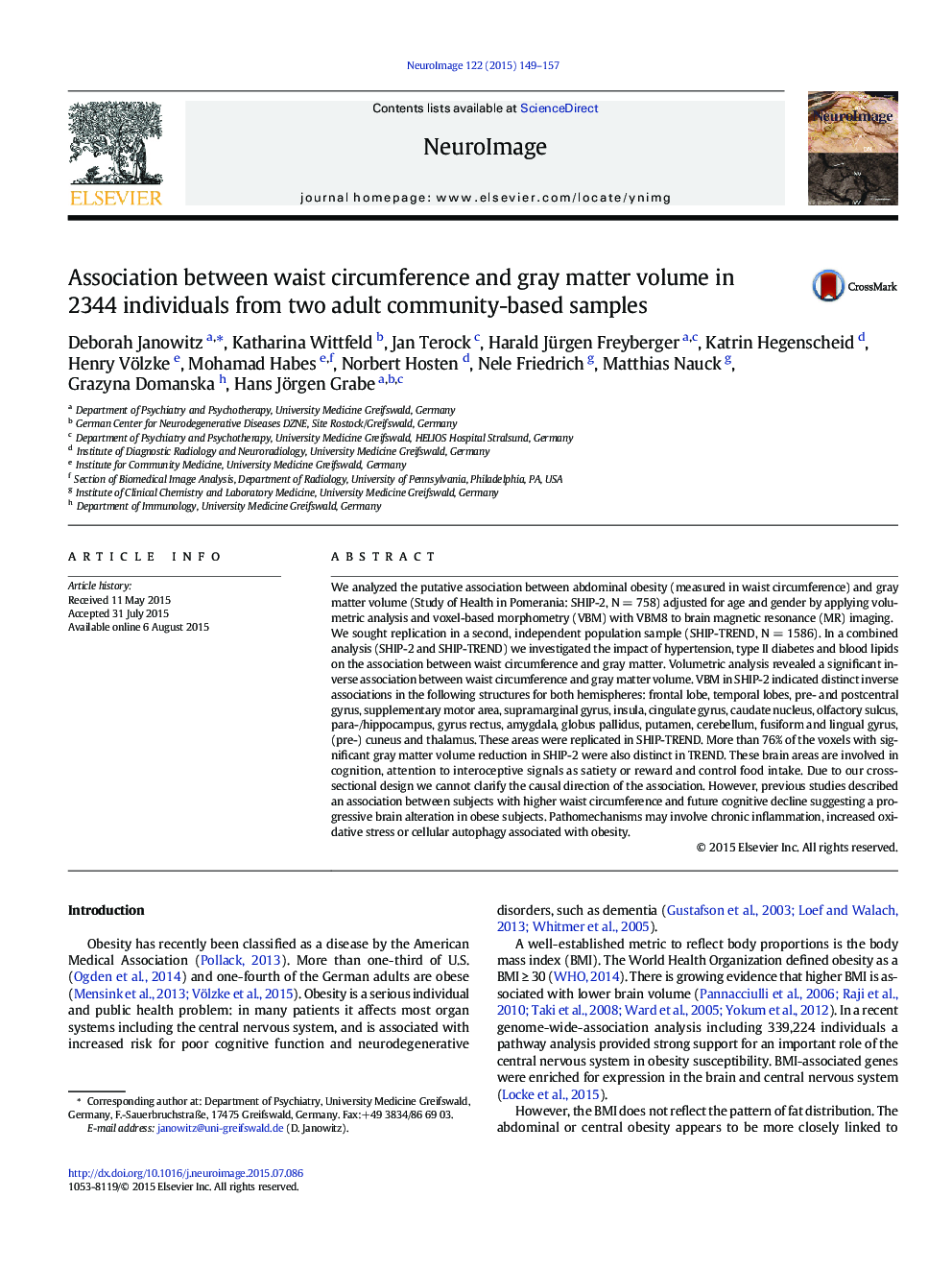| کد مقاله | کد نشریه | سال انتشار | مقاله انگلیسی | نسخه تمام متن |
|---|---|---|---|---|
| 6024647 | 1580885 | 2015 | 9 صفحه PDF | دانلود رایگان |
- Highly significant associations between abdominal obesity and reduced gray matter volume
- 76% of the areas with gray matter volume differences were replicated in an independent sample.
- Adjustment for metabolic factors did not change results.
We analyzed the putative association between abdominal obesity (measured in waist circumference) and gray matter volume (Study of Health in Pomerania: SHIP-2, NÂ =Â 758) adjusted for age and gender by applying volumetric analysis and voxel-based morphometry (VBM) with VBM8 to brain magnetic resonance (MR) imaging.We sought replication in a second, independent population sample (SHIP-TREND, NÂ =Â 1586). In a combined analysis (SHIP-2 and SHIP-TREND) we investigated the impact of hypertension, type II diabetes and blood lipids on the association between waist circumference and gray matter. Volumetric analysis revealed a significant inverse association between waist circumference and gray matter volume. VBM in SHIP-2 indicated distinct inverse associations in the following structures for both hemispheres: frontal lobe, temporal lobes, pre- and postcentral gyrus, supplementary motor area, supramarginal gyrus, insula, cingulate gyrus, caudate nucleus, olfactory sulcus, para-/hippocampus, gyrus rectus, amygdala, globus pallidus, putamen, cerebellum, fusiform and lingual gyrus, (pre-) cuneus and thalamus. These areas were replicated in SHIP-TREND. More than 76% of the voxels with significant gray matter volume reduction in SHIP-2 were also distinct in TREND. These brain areas are involved in cognition, attention to interoceptive signals as satiety or reward and control food intake. Due to our cross-sectional design we cannot clarify the causal direction of the association. However, previous studies described an association between subjects with higher waist circumference and future cognitive decline suggesting a progressive brain alteration in obese subjects. Pathomechanisms may involve chronic inflammation, increased oxidative stress or cellular autophagy associated with obesity.
Journal: NeuroImage - Volume 122, 15 November 2015, Pages 149-157
